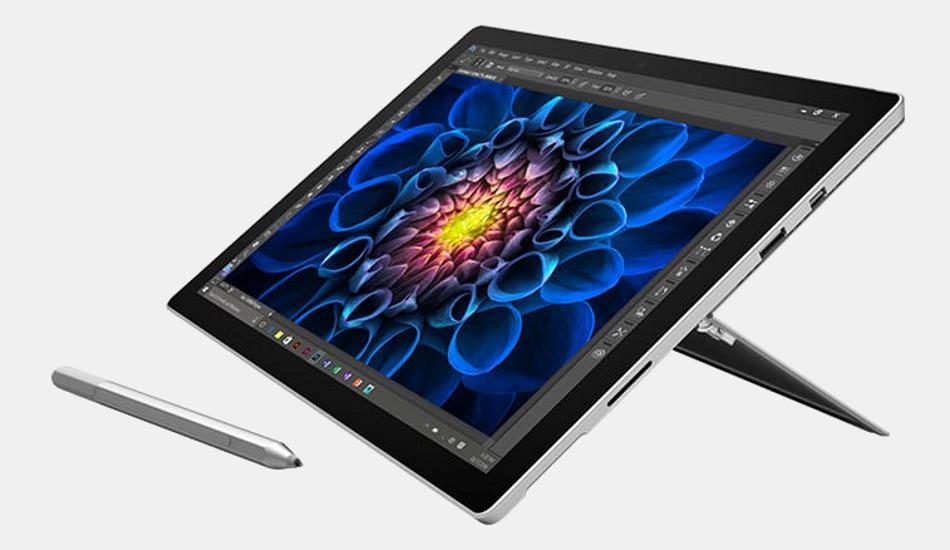Microsoft is all set to unveil its next generation of 2-in-1 tablet, the Surface Pro 5, in the next few months, according to a new report. The company is planning to launch the Surface Pro tablet in the first quarter of 2017.
According to a report by DigiTimes, Microsoft’s new Surface Pro 5 will feature an Ultra HD 4K display and magnetic charging stylus. The report further hints that Pegatron Technology will be the manufacturing partner for its latest 2-in-1 tablet. However, information about the specifications and pricing of the device is slim at the moment, and we might have to wait for a while in order to get a more concrete information about the upcoming device.
Microsoft is anting up the hardware game, as the company recently unveiled it updated version of its 2-in-1 Surface Book and an all new all-in-one desktop computer known as Surface Studio . Although, it’s been awhile since the company has updated its Surface Pro lineup. The company launched the Surface Pro 4 back in October 2015, which made its way to the Indian shores in January 2016. The Surface Pro 4 with Intel Core i5 processor, 128 GB storage and 4 GB RAM was priced at Rs 89,990 while another model with an i5 processor, 256 GB storage and 8 GB RAM comes with a price tag of Rs 1,20,990. The third model of Pro 4 with Intel i7 processor, 8 GB RAM and 256 GB storage has a price tag of Rs 1,44,990.
For the specs, the Surface Pro 4 has a 12.3 inch PixelSense display with Corning Gorilla Glass 4. It runs on 6th Gen Intel processor and has expandable RAM facility – you can increase its RAM to up to 16 GB. It has a microSD card slot as well. The hybrid tablet also offers 802.11ac WiFi, Bluetooth 4.0 Low Energy (LE) and full-size USB 3.0 port. Besides, the tablet has an 8-megapixel rear facing camera, 5-megapixel front camera and access to all Office apps. The device also comes with a multi-position kickstand and the company is offering a keypad for this tablet (which is sold separately) using which you transform this tablet into a laptop.
Note: The photo used in this article is of Microsoft Surface Pro 4


